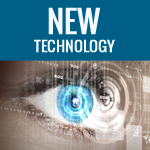As humans we have five senses which work together to 
help us respond to a situation. Our behavior at a particular
point is defined by the play of these senses.
This is where machines were thought to be different from humans;
they were not intuitive and could not take decisions on their own.
But, over a period of time, this has changed and machines are getting
more intuitive and are used for decision making. These decisions are based
on the data that is fed into the computer and the algorithms programmed
into the application and this was earlier dependent on the humans entering data.
But now with mobile technology and the advent of Internet of Things, manual intervention
is about to change. About a decade ago, Anind Dev and Gregory Abowd, two researchers
from Georgia Tech came up with the concept of “Contextual Computing”. Contextual computing
uses situational and environmental information and provides enriched, situation-based solutions.
Contextual computing is basically getting to know the thoughts and surroundings of the user
and then giving him or her suggestions and reminders regarding work, social commitments or
personal aspects. This takes decision making and automation of machines to a new level.
There are four graphs that form the pillars of Contextual Computing –
- The Social Graph – As the name suggests, this graph deals with the social
aspects of a person, which is a list of a user’s friends and connections.
The main concern in getting information for this graph is that, the information
about your friends may get shared with others and the friends may not be very
delighted with this fact. But, on the other hand, if used correctly,
it can get you connected with things that you like to do or people that you may know or
want to know or establish contacts with. Examples of Applications using the
Social graph are Facebook and LinkedIn, which suggest friends and connections to
a person based on his or her connections or social activities.
- The Interest Graph uses a person’s interests to get to know more about the person.
Usually, a person’s interests are usually correlated and so based on a person’s activities
like the books the user reads or places the user visits, the user can then be provided
with more suggestions based on this activity. Good reads is such a website that suggests
books that a person may like to read based on their individual previous activity via
their individual Interest Graph. But, this is still not taking into consideration that
a user may develop or want to explore newer interests.
- The Behavioral Graph – The Internet of Things has made it easier to map a
person’s routine and actions. It defines what a person actually does, e.g. when does
a person get up, does a person exercise and if so, the time spent on the activity, etc.
This defines the actual behavior of a person. New exercises, diets,
etc can be prescribed based on the behavioral graph.
- The Personal Graph defines a person’s beliefs, values and reflects his or her personality.
This is a very complex graph, because nobody has yet been able to map a person’s
though process. So though this graph can play an important role in defining a person’s
contextual feelings, mapping it to an algorithm is difficult.
Also, a person may not want to share all intimate details about his
or her personality for people to analyze.
With a person’s personal life being studied, naturally, there are concerns regarding
privacy of an individual while creating and using these graphs. These issues are being addressed
with new legislation and security aspects being put in place.
Conclusion
Applications can use contextual computing to analyze different aspects of relevant data from
the users and arrive at decisions or possible solutions for the business managers to use.
Though currently in its infancy it is believed that over the next decade contextual computing will be a dominant force.
